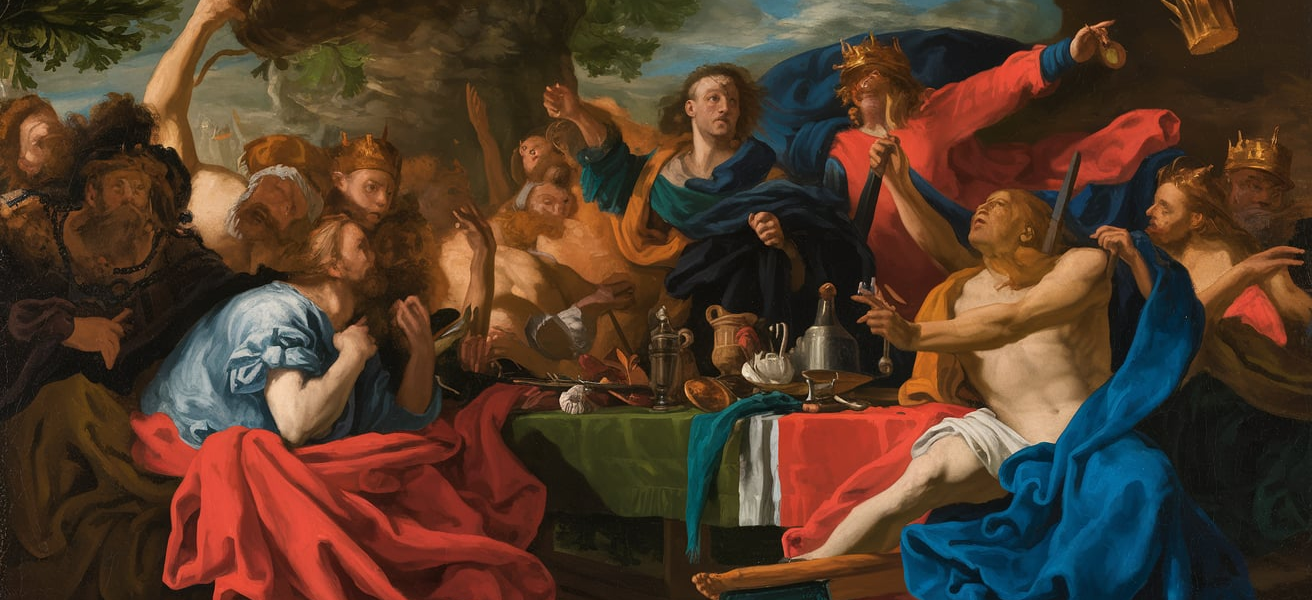The seventeenth century became a golden technology for Dutch art, with several gifted artists developing incredible works. Among them was Jan Harmensz van Bijlert, an influential painter from the Dutch Golden Age. His portrayal, The Feast of the Gods, stands proud as a shiny portrayal of classical mythology and a testimony to his skills. In this article, we’ll explore the ancient context, inventive elements, and significance of The Feast of the Gods by Jan Harmensz van Bijlert.
The Context Behind The Feast of the Gods
Jan Harmensz van Bijlert was born in 1597 in Utrecht, a town that became one of the key facilities of inventive activity throughout the Dutch Golden Age. Van Bijlert is skilled underneath Abraham Bloemaert, a renowned artist, and became influenced by the Caravaggisti fashion.
The Feast of the Gods by Jan Harmensz van Bijlert exemplifies this influence, blending naturalism with colourful lights and wealthy colours. The painting is a visible retelling of a classical mythological scene, highlighting the gods in a birthday celebration, a popular theme for many artists of that length.
Depicting the Mythological Scene
The Feast of the Gods by Jan Harmensz van Bijlert portrays a scene of gods and goddesses gathered at a celebratory feast, enjoying a luxurious ceremonial dinner. The painting brims with figures from classical mythology, with every deity exceedingly portrayed. The scene encapsulates the splendour and extravagance of the gods, evoking a sense of grandeur and divine festivity.
Van Bijlert skillfully captures the character expressions and gestures of the gods, breathing lifestyles into this epic accumulating. The feast symbolises abundance and pleasure, and the artist’s technique to this subject matter invites visitors into an international in which the gods revel in their immortality.
The Influence of Caravaggio
Caravaggio’s dramatic use of chiaroscuro, a method that performs with light and darkish contrasts, profoundly impacted many Dutch artists, along with van Bijlert. In The Feast of the Gods by Jan Harmensz van Bijlert, this approach is obvious in how the figures are illuminated, creating a contrast between mild and shadow.
The divine figures, bathed in light, seem to glow amidst dark history, highlighting their otherworldly status. The use of Caravaggisti techniques allows the viewer to pay attention to the critical movement of the portrayal, drawing interest to the dynamics of the banquet.
Symbolism and Allegory
Like many mythological artworks, The Feast of the Gods by Jan Harmensz van Bijlert, is rich with symbolism. Each god and goddess present within the painting is an illustration of precise traits or powers. For instance, Bacchus, the god of wine, represents indulgence and revelry while Venus, the goddess of affection, symbolises beauty and preference.
The painting may additionally replicate deeper symbolic meanings related to the human condition and the roles of the gods in influencing fate and fortune. Van Bijlert’s interest in depicting those deities shows his purpose to create a piece that now not only entertained but also provoked notion about the forces that shaped the sector.
The Composition and Style
In terms of composition, The Feast of the Gods by Jan Harmensz van Bijlert is cautiously arranged to emphasise the team spirit and individuality of the gods. The figures are placed in a semicircular formation, drawing the viewer’s eye into the middle of the scene.
The minimalistic background allows the colourful figures and their lavish clothes to take centre stage. This composition showcases van Bijlert’s mastery of balancing complexity and clarity, enabling each god to be prominent without overwhelming the viewer with immoderate details.
The Importance of Mythology
Mythological subject matters were extensively popular amongst Dutch artists in the 17th century. The Feast of the Gods by Jan Harmensz van Bijlert, is a top example of how artists drew suggestions from historical testimonies. These memories of gods and goddesses were no longer just a way to entertain; they were often used to mirror human studies, values, and ethical training.
By portraying this grand banquet, van Bijlert connects viewers with timelessness and universality. Even though the portrayal is ready gods, it mirrors the communal joy and celebrations of human existence, making The Feast of the Gods by Jan Harmensz van Bijlert a relatable and enduring masterpiece.
The Legacy
The Feast of the Gods by Jan Harmensz van Bijlert remains an essential work, now not only for its artistic features but also for its contribution to the Dutch Golden Age’s frame of mythological art. Van Bijlert’s potential to mixture Dutch realism with the dramatic flair of the Caravaggisti marks him as one of the most skilled painters of his time. This painting continues to captivate art historians and fans, showcasing how classical mythology changed and reinterpreted in Northern Europe.
Conclusion
The Feast of the Gods by Jan Harmensz van Bijlert is a vivid, distinct, and inventive portrayal that captures the spirit of mythological storytelling through the lens of 17th-century Dutch art. Jan Harmensz van Bijlert’s unique approach, motivated by Caravaggio and the Dutch realist subculture, makes this painting a compelling fusion of mild colouration and narrative.
Whether widespread for its technical brilliance or rich depiction of the divine, The Feast of the Gods by Jan Harmensz van Bijlert is a long-lasting masterpiece that encourages admiration and scholarly interest.




